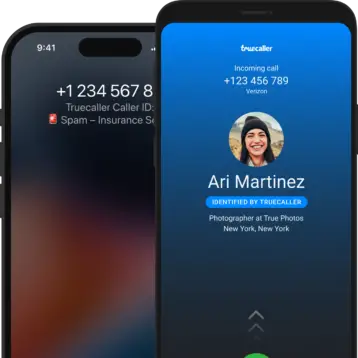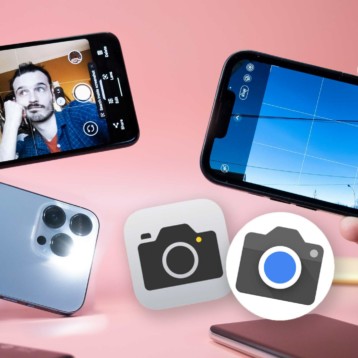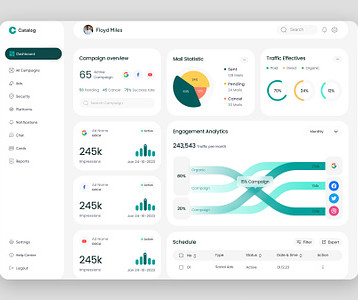
People spend a lot of time browsing through apps on their phones, and the amount of time spent doing that is bound to increase. While brands invest time and effort in creating functional and aesthetic desktop websites, they tend to forget a significant number of purchases made by people are done through their mobile phones.
Improving customer engagement means paying more attention to the mobile accessibility of apps and websites used by customers. This consideration for mobile shopping is known as m-commerce and can be improved in many ways to enhance consumers’ experience.
What Is M-commerce?
Mobile commerce is simply using devices like tablets and phones to perform various commercial actions. It’s a subset of electronic commerce (e-commerce) that came into being due to the need to sell online products to increasing number of mobile users. Through m-commerce, consumers can use push notifications to utilize online banking, bill payments, and make product purchases. Furthermore, companies can use SMS APIs to programmatically send text message notifications to clients. An SMS gateway API facilitates SMS integrations, as it allows businesses to combine their current communication applications with a bulk SMS service, creating more leads and improving their bottom line.
Mobile commerce focuses on the significant journey a consumer goes through while making commercial decisions on their mobile devices. Many of these commercial transactions are done within a few clicks, providing consumers with the convenient shopping experience they deserve.
The reason most brands are reluctant to adopt mobile shopping is due to security issues. Currently, mobile security issues are a matter of carelessness, thanks to the stringent security measures, you can be sure more people would be subscribing to the idea of m-commerce.
Trends Shaping M-commerce
There’s a rapid increase in the number of time users spend on their phones. Certain trends translate the surge and there is no indication that it will stop. Businesses have to leverage these trends, understand why they’re important, and create the necessary adjustments that would result in a great mobile shopping experience. The trends include:
- One-Click Order: Buyers want to be able to order goods in one click, and mobile devices provide them with that option. Filling in shipping and payment details every time makes the ordering process tiring, resulting to discouragement to complete an order. However, m-commerce apps save vital information that the customer inputs so the next time they make an order, they won’t have to enter the details again.
- Site Search: Another trend shaping m-commerce is easy-to-site search. Consumers want to browse through available products quickly. This swiftness is one reason mobile applications should be designed by professionals who understand what consumers want and need. Professionals have to ensure that any design they make is consumer-centric.
- Social Media Sales: Social media applications such as Instagram, allow online shoppers to easily buy whichever product they want. The ease that they get in purchasing products on social media is the reason shoppers are sticking to m-commerce. Brands that are leveraging this trend with effective social media marketing, will surely improve customers’ shopping experience.
Ways To Improve Mobile Shopping Experience

Online companies can improve mobile shopping experience for your consumers by following these tips:
- Focus On Consumer Needs
If you’re creating an m-commerce app, it should be tailored to suit the needs of your customers. For instance, if most of your target audience is middle-aged people, then you want to ensure that the wordings on your applications are legible.
The first step in focusing on your consumer needs is discovering what those needs are. Conduct a market research, and ensure you convey to your designers and application developers the information that you have gathered through your research, to effectively meet your buyers’ needs. Keep in mind that personalization is the key to improving consumers’ mobile experience.
- Create A User-friendly Interface
Your application will be used by a specific set of buyers, known as your target audience. You need to make sure your m-commerce app and website are easy to use and compatible with different mobile devices.
The pages on your app should be zoomable, because non-zoomable shopping applications can be stressful for the average user. While pinch-zooming may seem unnecessary if apps and websites are mobile-optimized, there’s no one-size-fits-all. If you’re after accessibility and engagement, adding the option should be executed.
- Add A Personal Touch
All messages should be personalized to show value and care, your consumer expects that you are familiar with their likes, dislikes, and preferences. Buyers have so much expectations from you because they know their rights and they highly contribute to the success of your business. They invest in your company, so they want to see how you’d invest in theirs by getting to know them.
Providing shoppers with personalized content through posts, messages, and comments, can improve their experience and keep your business afloat. You can also use push notifications to add a personal touch to their shopping experience.
- Optimize App And Website Speed
Convenience in using a business website or application, is one of the factors that mobile customers check if it’s worth it or not. There are times that the price of goods or the marketing strategies of the brand isn’t the consumer’s concern but more of the convenience and commitment that the business give to their buyers. Customer retention is attained if the consumer is always contented with the service that they get.
One of the ways you can improve your consumer’s mobile shopping experience is by optimizing your app and website speed by adopting responsive design. This can be done by reducing the number of loads on your apps and websites. You should decrease the number of images, use pre-built themes, and be intentional about the layouts.
- Ask For Important Information Only
One great advantage of using m-commerce is that buyers can easily add a product to their cart without any problems. Once they have successfully added the products to their cart, they can check out with no issues and just await delivery.
But this simplicity is compromised when buyers are confronted with lots of questions about shipping details before they can complete their order. As a business owner, it’s important that you ask your consumers for key information only, to make logistics less stressful and make their mobile experience up to par.
Conclusion
M-commerce is the real deal in businesses at this day and age. Everyday consumers keep switching to brands that provide them with comfortable shopping experience. If you are aiming for a successful online business, be open to all facets of innovation and to customer feedbacks. As a business owner, you need to ensure you’re tapping into trends shaping m-commerce and improving them for maximum shopping engagement.










